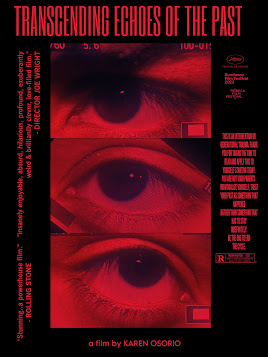Intervention 3: Generational Trauma
For my final intervention I decided to tackle generational trauma one last time, but with a twist. Because I’m a Media major and I’m extremely into cinematography, I have decided to create replications of film posters that discuss this concept. I have decided to create three versions of these posters. Activism on generational trauma is important for me to speak on because it acknowledges the lasting effects of these traumatic experiences and seeks to promote healing and justice for those affected.
In the Art of Activism there’s a quote that says, “when our goal is to work with others to change the world, a focus on having noble intentions is not enough (pg. 259).”I feel like this is one of those long-lasting issues that need to be acknowledged back-to back in order to make a difference and that’s why this quote resonated with me. One of the primary reasons why activism on generational trauma is so important is because trauma can have lasting effects on individuals and communities. Trauma can manifest in a variety of ways, including anxiety, depression, post-traumatic stress disorder, substance abuse, and other mental health issues. Additionally, generational trauma can also affect the social and cultural fabric of communities, leading to issues such as poverty, violence, and intergenerational conflict. By myself raising awareness of the lasting effects of trauma, activism acts can help to promote healing and address these issues further.
Activism on generational trauma is also important because it can help to promote justice and accountability for past wrongs. In many cases, generational trauma has been caused by systemic oppression, such as racism, colonialism, or imperialism. By acknowledging and addressing the root causes of trauma, activists can work to dismantle these systems of oppression and promote a more just and equitable society. For instance, in the Art of Activism its mentioned briefly that “by experimenting with our own pieces and working with others who have different tactics and strategies, we increase the possibility of all of us having a greater impact (pg. 258).”
Another reason why activism on generational trauma is important is because it can help to promote intergenerational healing and resilience. When trauma is acknowledged and addressed, individuals and communities can begin to heal and move forward. By promoting healing and resilience, activists can help to break the cycle of generational trauma and create a brighter future for future generations, or in other words fix the cycle.
Finally, activism on generational trauma is important because it can help to promote understanding and empathy between different groups of people. For example, in page 61 of Kimberly Drew’s “This is What I Know About Art”, she mentions that “our activism, like any other part of ourselves, develops into something bigger than a singular experience.” While trauma, as well as activism can be a deeply personal and isolating experience, it’s also a part of a collective. We are all interconnected. By acknowledging and sharing stories of trauma, individuals and communities can come together and find common ground. This can help to promote understanding and empathy between different groups of people and promote healing and reconciliation.
In conclusion, I hope to build this form of activism on generational trauma in hopes to address the legacy of trauma, so we can then create a more just and equitable society for future generations.
Some of the artists that inspired me for this final intervention are as follows:
Patrisse Cullors, an artist and activist, that is also best known as one of the co-founders of the Black Lives Matter movement. Her art focuses on racial justice and has featured anti-gentrification and prison abolitionist programming during the pandemic and protests. Cullors’s reimagines art spaces as sites of care and community.
Liu Ye - Chinese painter best known for his colorful, stylized images. He often depicts young children standing before paintings and the Dutch cartoon character Miffy. Liu’s work does not focus on the political and economic changes in China, but rather seeks to depict his own playful imaginings and interests.
Titus Kaphar - Titus Kaphar is an artist whose paintings, sculptures, and installations examine the history of representation by transforming its styles and mediums with formal innovations to emphasize the physicality and dimensionality of the canvas and materials themselves.
Zanele Muholi - Muholi self-identifies as a visual activist, and their development as a photographer is deeply intertwined with their advocacy on behalf of the LGBTQ community in South Africa and beyond.
Works Cited
Drew, Kimberly. This Is What I Know About Art. Penguin Young Readers Group, 2020.
Duncombe, Stephen, and Steve Lambert. The Art of Activism: Your All-purpose
Guide to Making the Impossible Possible. OR Books,
LLC, 2021.
Kooness, https://www.kooness.com/posts/magazine/most-popular-contemporary-artists.
“Discover, Buy, and Sell Fine Art.” Artsy, https://www.artsy.net/.
Ryder, Gina. “Intergenerational Trauma: How It Affects Families.” Psych Central, Psych Central, 15 Apr. 2022, https://psychcentral.com/lib/how-intergenerational-trauma-impacts-families.



No comments:
Post a Comment